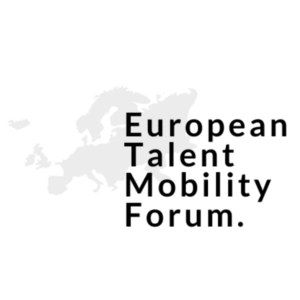The Nordic Place Branding Conference is approaching at a fast rate! The world is also changing at a fast rate. Digitalisation, new behaviours after the pandemic, the climate crisis, accelerating skills shortages, economic downturn, inflation and demographic changes. The list of ever-changing challenges – and opportunities – goes on.
With such an accelerating rate of change, the importance of keeping track of and understanding trends and future scenarios have never been more important, for organisations and places alike.
This year’s Nordic Place Branding Report will therefore focus on discussing topical trends for places in the years to come, with a view to help you and your place to navigate in a complex, volatile world.
Here’s a taster of some the trends that the report will look closer at.
What will we see happening now and in the coming years? 8 trends:
One: Places will increasingly focus their attention on the good life. Places that are sustainable, healthy, car free and safe, combined with attractive living environments, culture, experience and opportunities for personal development and learning will thrive in the coming decade. The extensive interest in the 15-minute city – where we can reach everything we need in our daily life within a 15-minutes bike ride or walk – can be understood in this context. The pandemic surely gave this trend a push, by changing our values to become more community and family focused.
Two: Place development and digital storytelling need to merge to create a holistic experience of the place. We are approaching the so-called “spatial internet” at a fast pace, meaning that internet will become an increasingly three-dimensional space, not the least through an accelerating use of virtual reality (VR) and augmented reality (AR) technologies, and further into the future, metaverse applications. This means that a talent, an investor, or a visitor will be able to experience the place before they move, invest or visit. Places thus need to craft a seamless and coherent place brand identity that looks and feels consistent and credible across the boundaries of the physical place and digital space.
Three: ChatGPT creates your content and becomes your personal travel guide. Have you heard about ChatGPT? You probably have. It is by now the fastest spread application in the history of the internet. It reached 100 million users in 2 months (it took TikTok 9 months and Instagram 2,5 years to do the same). What impact on places can we expect? First, ChatGPT and image create AI apps will make content creation for marketing and storytelling much easier and cheaper. Anyone can now create great stories, texts and images that can be used to market the place. Secondly, ChatGPT can with ease become your local, personal travel guide, challenging Destination Marketing Organisations (DMOs), tourist information centres and travel guides. Imagine strolling around in, say Helsinki, you can ask ChatGPT to give you the story and history of any place or attraction of your interest in the city.
Four: A desire for digital detox and “Joy of Missing Out” creates a demand for authentic places. Yes, we will see many digital trends accelerate in the years to come. But also trends pointing in the opposite direction. Sometimes we want to unplug and get off the grid. Booking.com’s trend study 2023 shows that many travelers (55%) are looking for off-grid style vacations to escape from reality, and almost half (44%) want their travel experiences to have a more back-to-basics feel. Also, travelers are craving nostalgia and authentic experiences. In the words of Booking.com: “We found that 88% of travellers want nostalgic getaways in 2023 – things like visits to retro film locations, or bus travel to evoke school trips. While almost a quarter (23%) want to disappear into the romanticism of a pre-digital era – even Millennials and Gen Z traveller who never lived it”.
Five: Place brand, service level and hospitality are becoming the winning recipe for landing big investments. The last few years, a range of Nordic and European locations have landed mega-investments, such as data centres or battery factories. This has triggered a renaissance for investment promotion at the local and regional level, and more and more municipalities and regions are now professionalizing their work with investment promotion. Proactively making land available, and packing the information and data the investor needs, are measures taken by many locations. When everyone is stepping up their game, what will be the deciding factors for investors? Most likely softer factors, like place brand image and which locations that can provide the best service and hospitality to the investor.
Six: Investment reshoring continues to grow – creating new opportunities for Nordic regions. Reshoring, meaning that corporations bring back production and other functions from remote markets started accelerating in 2020, driven by effects of the pandemic. Other accelerators have been the accumulating perception of risk driven by geopolitical forces of the Russian invasion of Ukraine, rapidly changing supply chains due to the growth of clean energy and the risk of China decoupling. Figures from the US show that the total value of reshoring exceeded general foreign direct investment in 2020 and 2021. A study published in the beginning of 2022 showed that over 60% of European and US manufacturing companies expect to onshore or re-shore part of their Asia production in the next three years. What does this mean for Nordic regions? That investment promotion activities should not only focus on firms that are not already in the region but also companies that have operations elsewhere in the world.
Seven: Talent retention is the new attraction. With accelerating talent shortages in most part of the economy, more and more places invest in helping their employers attract and retain talent. Quite often, there is a one-sided focus on attracting new people, and too little focus on welcoming and integrating those that come. In a study of international students in Sweden that we did for the ‘Switch to Sweden’ project last year we could conclude that the students’ experience of the place during first half year plays an enormous role for their staying prospects and their willingness to spread the word to others. If they are happy, they will gladly communicate this to their peers – meaning that retention is becoming the new attraction.
Eight: Culture and experiences are replacing retail in city centres. We’ve all heard about the death of the high street. Malls, e-commerce and the pandemic have all contributed to lining up traditional city centre shops for a massive knockout. This begs a very serious question: what are we going to have city centres for, in the future? But there is salvation. A study in Sweden showed that more culture and experiences in the city centres create more turnover for shops, as well as bring social benefits, such as more safety. Investing in more culture and experiences will create both a livable but also more prosperous place.
Excited to see you at the Nordic Place Branding Conference in May and discuss more!
– Marcus Andersson,
CEO








